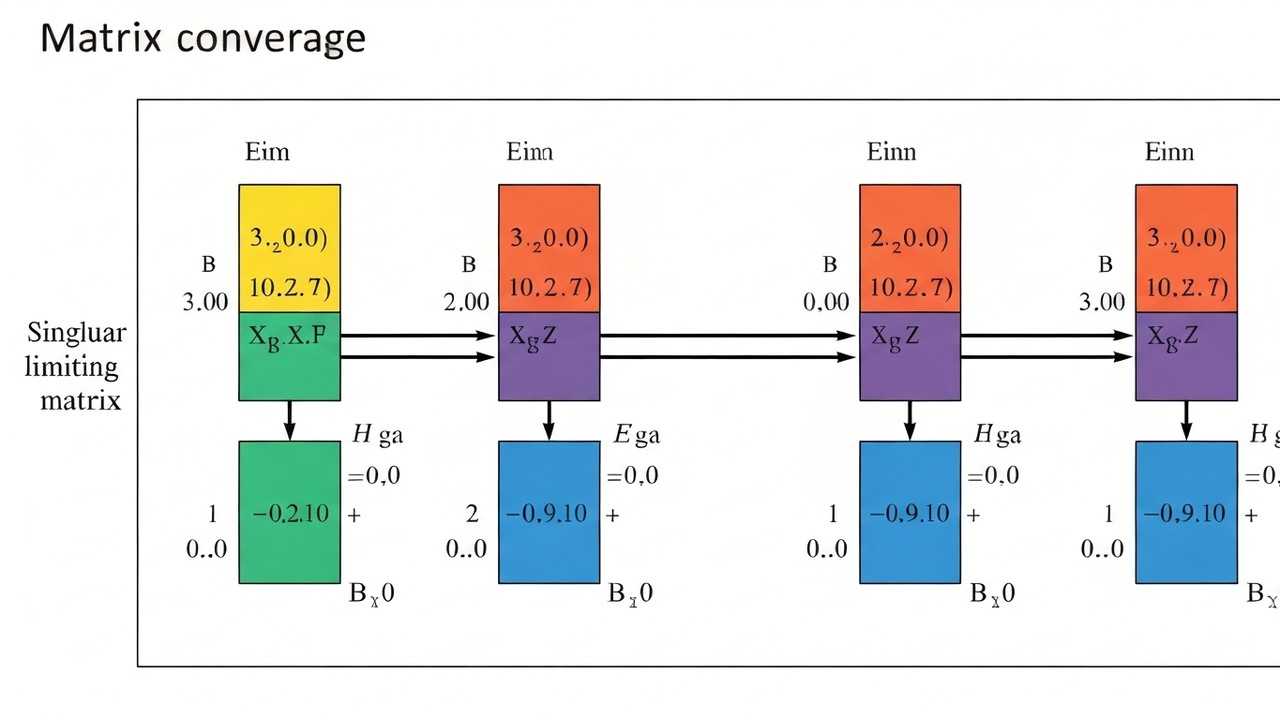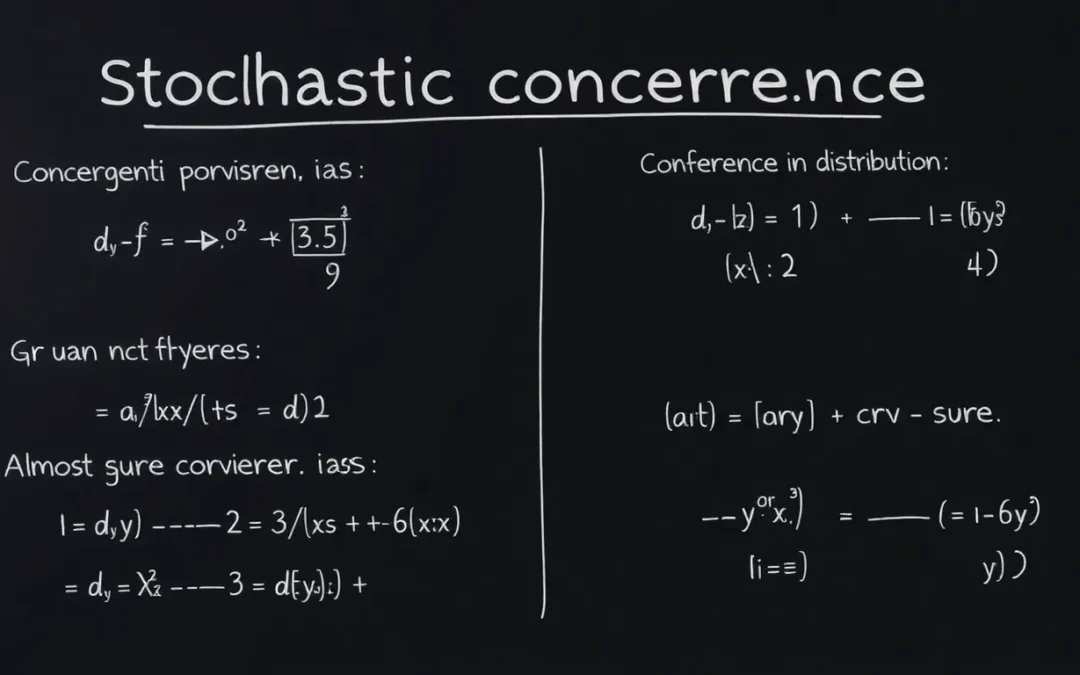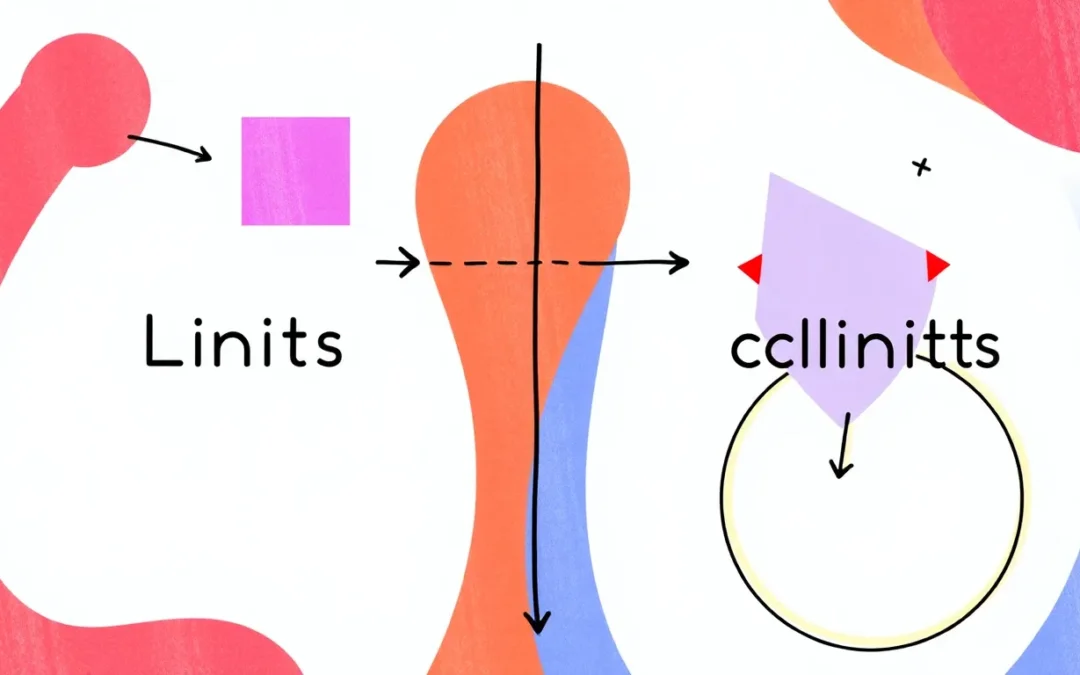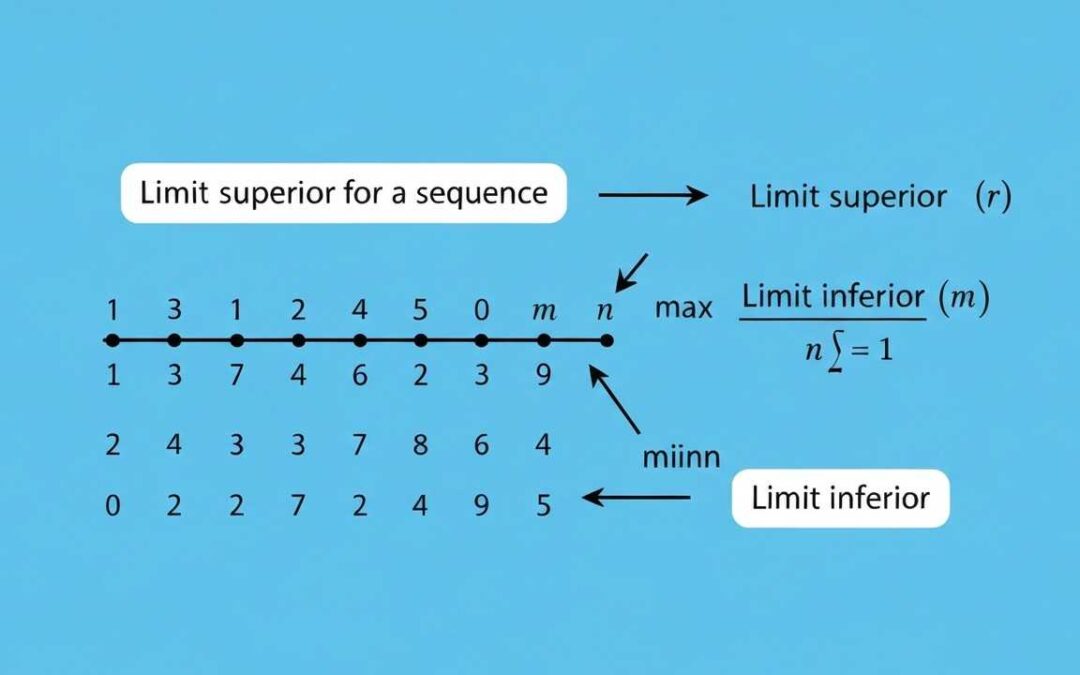The term convergent matrix might sound technical, but its significance in linear algebra and numerical methods is immense. These matrices are at the core of iterative techniques, helping us solve complex equations. They determine whether these methods will reach a solution, which makes them indispensable for many real-world problems.
Table of Contents
Read More
Linear algebra provides the tools to understand and solve complex systems. At the heart of this field lies the concept of convergent matrices, which play a crucial role in iterative methods for solving linear equations. This article will explain what convergent matrices are, their properties, and how they relate to iterative solution techniques. We will delve into the conditions under which a matrix converges and explore the implications for numerical analysis and practical applications.
What are Convergent Matrices?
A convergent matrix is a square matrix that converges to the zero matrix when raised to successive powers. This means that as you repeatedly multiply the matrix by itself, the entries of the resulting matrices get closer and closer to zero. The concept is fundamental to understanding the behavior of iterative methods used to solve systems of linear equations. These methods repeatedly refine an initial guess until a solution is found. The convergence of the matrix dictates whether these methods will converge to a solution.
Defining Convergence
A matrix T is considered convergent if, for all i and j, the elements of Tk approach zero as k approaches infinity. This is mathematically expressed as ##lim_{k \to \infty} (T^k)_{ij} = 0##. This behavior is critical in iterative processes, where the matrix determines how the solution vector is updated in each iteration. Understanding this convergence is vital for the reliability of iterative algorithms used in various scientific and engineering applications.
Spectral Radius and Convergence
The spectral radius, denoted as ##\rho(T)##, of a matrix T is the largest absolute value of its eigenvalues. A crucial condition for the convergence of a matrix T is that its spectral radius must be less than 1, i.e., ##\rho(T) < 1##. This condition provides a straightforward test for determining if a matrix is convergent. The spectral radius acts as a benchmark, ensuring that repeated multiplication diminishes the matrix’s influence, driving it towards the zero matrix.
Examples of Convergent Matrices
Consider the matrix: ###T = \begin{bmatrix} 0.25 & 0 \\ 0 & 0.25 \end{bmatrix}###. Computing the powers of T, we see that the elements approach zero. The spectral radius of T is 0.25, which is less than 1, confirming its convergence. Conversely, a matrix like ###T = \begin{bmatrix} 2 & 0 \\ 0 & 0.5 \end{bmatrix}### is not convergent because its spectral radius is 2, which is greater than 1.
Properties of Convergent Matrices
The properties of convergent matrices are essential for their use in iterative methods. Several equivalent conditions can define a convergent matrix. These properties provide different perspectives on convergence, offering insights into the behavior of matrices under repeated multiplication. These properties are fundamental in determining if an iterative method will successfully converge to a solution, ensuring the reliability of numerical computations.
Norms and Convergence
A matrix T is convergent if and only if ##lim_{k \to \infty} ||T^k|| = 0## for some natural norm. This means that the norm of the matrix powers approaches zero as k increases. This property is independent of the specific natural norm chosen. This implies that regardless of the norm used, the repeated multiplication will eventually make the matrix insignificant.
Spectral Radius Criterion
As mentioned earlier, a matrix T is convergent if and only if its spectral radius ##\rho(T) < 1##. This is a practical and easily verifiable criterion. It offers a simple way to determine whether a matrix will converge. The spectral radius provides a direct link between the eigenvalues of the matrix and its long-term behavior under exponentiation.
Convergence of Matrix-Vector Products
A matrix T is convergent if and only if ##lim_{k \to \infty} T^k x = 0## for every vector x. This means that when you repeatedly apply the matrix T to any vector, the result approaches the zero vector. This illustrates that the matrix effectively diminishes the influence of any initial vector, which is crucial for iterative methods to converge to a solution.
Convergent Matrices in Iterative Methods
Iterative methods use convergent matrices to solve linear equations. These methods refine an initial guess through repeated calculations. Convergence of the iterative process hinges on the properties of the associated matrix. Understanding these properties is vital for the effectiveness and efficiency of iterative techniques in solving complex mathematical problems. The choice of matrix directly impacts the speed and accuracy of the solution.
Iterative Methods and Convergence
Iterative methods convert a system of linear equations ##Ax = b## into the form ##x^{k+1} = Tx^k + c##. The convergence of this iterative process depends on whether the matrix T is convergent. If ##\rho(T) < 1##, the iterative method converges to the unique solution for any initial vector ##x^0##. This ensures that the iterative process will eventually converge, providing a reliable solution.
Regular Splittings and Convergence
A regular splitting of a matrix A is expressed as ##A = B – C##, where ##B^{-1} \ge 0## and ##C \ge 0##. If A is non-singular and ##A^{-1} \ge 0##, then the iterative method converges if the matrix T derived from this splitting is convergent. This provides a systematic approach to constructing iterative methods. Regular splittings guarantee convergence under specific conditions, making them valuable in numerical analysis.
Semi-Convergent Matrices
A matrix T is semi-convergent if ##lim_{k \to \infty} T^k## exists. If the system ##Ax = b## is consistent, the iterative method converges if and only if T is semi-convergent. This extends the applicability of iterative methods to cases where the matrix A may be singular. Semi-convergence broadens the range of problems that can be solved using iterative techniques.
Key Takeaways
The study of convergent matrices is vital for understanding iterative methods. These matrices determine whether iterative processes will converge to a solution. Knowing the properties of convergent matrices, such as the spectral radius condition and the behavior of matrix norms, allows us to predict the convergence of iterative methods. The practical implications of convergent matrices are significant in various fields, from numerical analysis to engineering, where iterative methods are used to solve complex problems efficiently.
Summary of Convergence Criteria
A matrix is convergent if and only if its spectral radius is less than 1. This means that the eigenvalues of the matrix must have an absolute value less than 1. This criterion is fundamental to determining whether an iterative method will converge to a solution. The spectral radius provides a simple and effective way to assess the convergence of a matrix.
Importance in Iterative Methods
Convergent matrices are essential in iterative methods, which repeatedly refine an initial guess until a solution is reached. The convergence of the matrix dictates the reliability and speed of these methods. The iterative methods are critical in solving systems of linear equations and various scientific and engineering applications. Understanding the properties of convergent matrices is essential for anyone working with iterative numerical methods.
Matrix Convergence Example
Problem: Determine if the matrix ### A = \begin{bmatrix} 0.7 & 0 \\ 0 & 0.8 \end{bmatrix} ### is convergent..
Step-by-Step Solution
- Definition of Convergence: A matrix is said to be convergent if its powers converge to the zero matrix as the exponent tends to infinity. This happens when the spectral radius of the matrix is less than 1.
- Step 1 – Find Eigenvalues: Since the given matrix is diagonal, the eigenvalues are simply the diagonal entries. ### \lambda_1 = 0.7, \; \lambda_2 = 0.8 ###
- Step 2 – Spectral Radius: The spectral radius is the maximum absolute value of the eigenvalues: ### \rho(A) = \max(|0.7|, |0.8|) = 0.8 ###
- Step 3 – Convergence Check: Since ### \rho(A) = 0.8 < 1 ###, the matrix is convergent.
Final Answer
The matrix ###A### is convergent because its spectral radius is less than 1.
Additional Note
In fact, for any diagonal matrix ### D = \text{diag}(d_1, d_2, \dots, d_n) ###, convergence is guaranteed if and only if ### |d_i| < 1 \; \forall i ###. In this example, both diagonal entries (0.7 and 0.8) satisfy this condition.
| Matrix | Eigenvalues | Spectral Radius | Convergent? |
|---|---|---|---|
| ### \begin{bmatrix} 0.7 & 0 \\ 0 & 0.8 \end{bmatrix} ### | 0.7, 0.8 | 0.8 | Yes (since 0.8 < 1) |
Problem 2 : Matrix Convergence Check
Problem: Determine if the matrix ### B = \begin{bmatrix} 1.2 & 0 \\ 0 & 0.5 \end{bmatrix} ### is convergent.
Step-by-Step Solution
- Definition: A matrix is convergent if its spectral radius (the maximum absolute eigenvalue) is strictly less than 1. In such a case, the powers of the matrix converge to the zero matrix.
- Step 1 – Eigenvalues: Since the matrix is diagonal, the eigenvalues are just the diagonal entries: ### \lambda_1 = 1.2, \; \lambda_2 = 0.5 ###
- Step 2 – Spectral Radius: ### \rho(B) = \max(|1.2|, |0.5|) = 1.2 ###
- Step 3 – Convergence Condition: Since ### \rho(B) = 1.2 > 1 ###, the condition for convergence is not satisfied.
Final Answer
The matrix ###B### is not convergent because its spectral radius is greater than 1.
Comparison with Previous Example
| Matrix | Eigenvalues | Spectral Radius | Convergent? |
|---|---|---|---|
| ### \begin{bmatrix} 0.7 & 0 \\ 0 & 0.8 \end{bmatrix} ### | 0.7, 0.8 | 0.8 | Yes |
| ### \begin{bmatrix} 1.2 & 0 \\ 0 & 0.5 \end{bmatrix} ### | 1.2, 0.5 | 1.2 | No |
Observation: Even though one eigenvalue (0.5) is less than 1, the presence of a larger eigenvalue (1.2) dominates the behavior. Hence, matrix powers diverge instead of converging.
Problem 3 : Matrix Convergence Analysis
Problem: Determine whether the matrix ### C = \begin{bmatrix} 0.3 & 0.4 \\ 0.4 & 0.3 \end{bmatrix} ### is convergent.
Step-by-Step Solution
- Definition: A matrix is convergent if its spectral radius (the largest absolute eigenvalue) is strictly less than 1.
- Step 1 – Characteristic Polynomial: For a 2×2 matrix ### \begin{bmatrix} a & b \\ c & d \end{bmatrix} ###, eigenvalues are given by: ### \lambda = \frac{(a+d) \pm \sqrt{(a-d)^2 + 4bc}}{2} ### Here, – a = 0.3, d = 0.3 – b = 0.4, c = 0.4
- Step 2 – Compute Eigenvalues: Trace: ### a + d = 0.3 + 0.3 = 0.6 ### Determinant: ### ad – bc = (0.3)(0.3) – (0.4)(0.4) = 0.09 – 0.16 = -0.07 ### Eigenvalues: ### \lambda_{1,2} = \frac{0.6 \pm \sqrt{(0.6)^2 – 4(-0.07)}}{2} ### ### = \frac{0.6 \pm \sqrt{0.36 + 0.28}}{2} ### ### = \frac{0.6 \pm \sqrt{0.64}}{2} = \frac{0.6 \pm 0.8}{2} ### So, ### \lambda_1 = 0.7, \; \lambda_2 = -0.1 ###
- Step 3 – Spectral Radius: ### \rho(C) = \max(|0.7|, |-0.1|) = 0.7 ###
- Step 4 – Convergence Check: Since ### \rho(C) = 0.7 < 1 ###, the matrix is convergent.
Final Answer
The matrix ###C### is convergent because its spectral radius is less than 1.
Summary
| Matrix | Eigenvalues | Spectral Radius | Convergent? |
|---|---|---|---|
| ### \begin{bmatrix} 0.3 & 0.4 \\ 0.4 & 0.3 \end{bmatrix} ### | 0.7, -0.1 | 0.7 | Yes |
Observation: Although one eigenvalue is negative (-0.1), only the absolute values matter for convergence. Since both are less than 1, the matrix powers converge to the zero matrix.
Problem 4
Problem: Determine whether the matrix ### D = \begin{bmatrix} 0.9 & 0 \\ 0 & 1.1 \end{bmatrix} ### is convergent.
Step-by-Step Solution
- Definition: A matrix is convergent if its spectral radius (the maximum absolute eigenvalue) is strictly less than 1.
- Step 1 – Eigenvalues: Since the matrix is diagonal, the eigenvalues are simply the diagonal entries: ### \lambda_1 = 0.9, \; \lambda_2 = 1.1 ###
- Step 2 – Spectral Radius: ### \rho(D) = \max(|0.9|, |1.1|) = 1.1 ###
- Step 3 – Convergence Check: Since ### \rho(D) = 1.1 > 1 ###, the matrix is not convergent.
Final Answer
The matrix ###D### is not convergent because its spectral radius is greater than 1.
Summary
| Matrix | Eigenvalues | Spectral Radius | Convergent? |
|---|---|---|---|
| ### \begin{bmatrix} 0.9 & 0 \\ 0 & 1.1 \end{bmatrix} ### | 0.9, 1.1 | 1.1 | No |
Observation: Even though one eigenvalue (0.9) is less than 1, the presence of an eigenvalue greater than 1 (1.1) causes divergence. Hence, the matrix powers do not converge to zero.
Problem 5 : Matrix Convergence Assessment
Problem: Determine whether the matrix ### E = \begin{bmatrix} 0.2 & 0.1 \\ 0.1 & 0.2 \end{bmatrix} ### is convergent.
Step-by-Step Solution
- Definition: A matrix is convergent if its spectral radius (the maximum absolute eigenvalue) is strictly less than 1.
- Step 1 – Characteristic Polynomial: For a 2×2 matrix ### \begin{bmatrix} a & b \\ c & d \end{bmatrix} ###, the eigenvalues are: ### \lambda = \frac{(a+d) \pm \sqrt{(a-d)^2 + 4bc}}{2} ### Here, a = 0.2, d = 0.2, b = 0.1, c = 0.1.
- Step 2 – Compute Eigenvalues: Trace = a + d = 0.2 + 0.2 = 0.4 Determinant = ad – bc = (0.2)(0.2) – (0.1)(0.1) = 0.04 – 0.01 = 0.03 Eigenvalues: ### \lambda_{1,2} = \frac{0.4 \pm \sqrt{(0.4)^2 – 4(0.03)}}{2} ### ### = \frac{0.4 \pm \sqrt{0.16 – 0.12}}{2} ### ### = \frac{0.4 \pm \sqrt{0.04}}{2} ### ### = \frac{0.4 \pm 0.2}{2} ### So, ### \lambda_1 = 0.3, \; \lambda_2 = 0.1 ###
- Step 3 – Spectral Radius: ### \rho(E) = \max(|0.3|, |0.1|) = 0.3 ###
- Step 4 – Convergence Check: Since ### \rho(E) = 0.3 < 1 ###, the matrix is convergent.
Final Answer
The matrix ###E### is convergent because its spectral radius is less than 1.
Summary
| Matrix | Eigenvalues | Spectral Radius | Convergent? |
|---|---|---|---|
| ### \begin{bmatrix} 0.2 & 0.1 \\ 0.1 & 0.2 \end{bmatrix} ### | 0.3, 0.1 | 0.3 | Yes |
Observation: Both eigenvalues lie strictly inside the unit circle, so repeated powers of the matrix converge to the zero matrix, ensuring convergence.
| Property | Description | Implication |
|---|---|---|
| Spectral Radius | The largest absolute value of a matrix’s eigenvalues. | For a matrix to be a **convergent matrix**, its spectral radius must be less than 1. |
| Norms | A measure of the “size” or “length” of a matrix. | A matrix is convergent if the limit of its norm to the power of k approaches zero as k goes to infinity. |
| Matrix-Vector Products | The result of multiplying a matrix by a vector. | If a matrix is convergent, repeated application to any vector results in the zero vector. |
| Iterative Methods | Algorithms that refine an initial guess through repeated calculations. | The convergence of iterative methods depends on whether the associated matrix is a **convergent matrix**. |
We also Published
RESOURCES
- Convergent matrix – Wikipedia
- linear algebra – Matrix sequence convergence vs. matrix power …
- Large N expansion of convergent matrix integrals, holomorphic …
- numerical methods – How to find the limit of a convergent matrix …
- Randomized Quasi-Newton Updates are Linearly Convergent Matrix …
- Convergent and discriminant validation by the multitrait-multimethod …
- Convergent relaxations of polynomial matrix inequalities and static …
- Detectability of Boolean networks: A finite-time convergent matrix …
- Randomized Quasi-Newton Updates are Linearly Convergent Matrix …
- 3. Matrix iterative methods








0 Comments